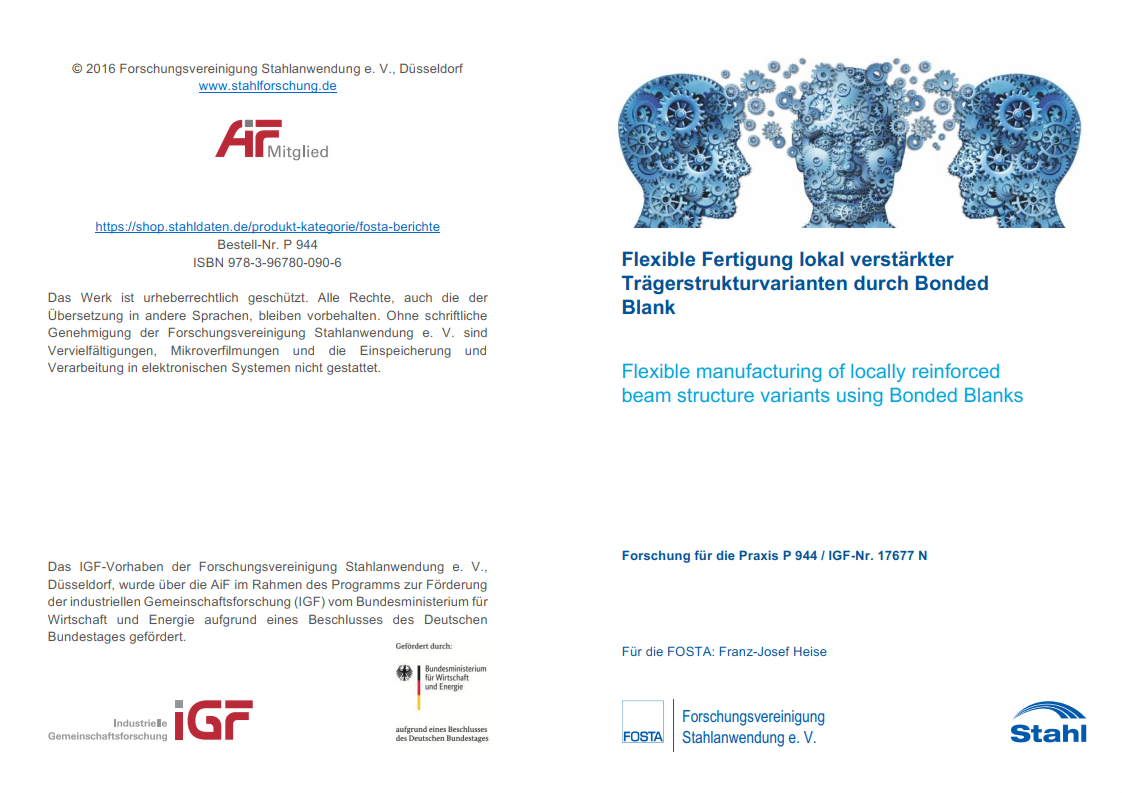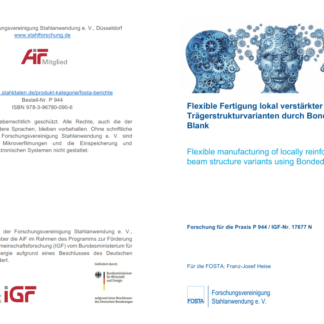Description
P 944 – Flexible manufacturing of locally reinforced beam structure variants using Bonded Blanks
A lightweight construction strategy implies the production of stress optimized components with the bonded blanks technology which provides a doubling of the sheet metal highly stressed areas. The main task of the bonded blanks technology includes the process of deep drawing with a base sheet and a reinforcement sheet, producing a double layered sheet composite. After the deep drawing process, the sheets are joined structurally by adhesive.
In the main goal of the research project was the development of a new tool-concept for a flexible manufacturing of deep drawing parts in bonded blanks technology. The developed tool system was intended to have adjustable receiving pockets for the reinforcing sheet. This enables the deep drawing of reinforced as well as unreinforced bonded blanks components with the same forming tool in a flexible way. Furthermore, the forming tool integrates a joining process for releasing of a simultaneous joining and deep-drawing process.
Further research priorities were the investigation and identification of suitable adhesives and the determination of the bond strength of bonded blanks parts. The adhesives were examined in terms of their temperature-dependent viscosity rheologically and joining strength. The manufactured bonded blanks parts were aged artificially by a corrosion test in order to evaluate the effects of the corrosion state on the adhesive bond and the bond strength. In the context of the part analysis, the dimensional accuracy and the quality of the adhesive bond were examined. The determination of the bond strength of the bonded blanks parts depending on the corrosion state is a key aspect of the part analysis. These studies were supplemented by non-destructive testing by means of the Iockin-thermography to evaluate the adhesive bond.
Published in:
2016
Authors:
Univ. Prof. Dr.-Ing. Prof. h. c. K. Dilger, Dipl.-Ing. G. Wisner




